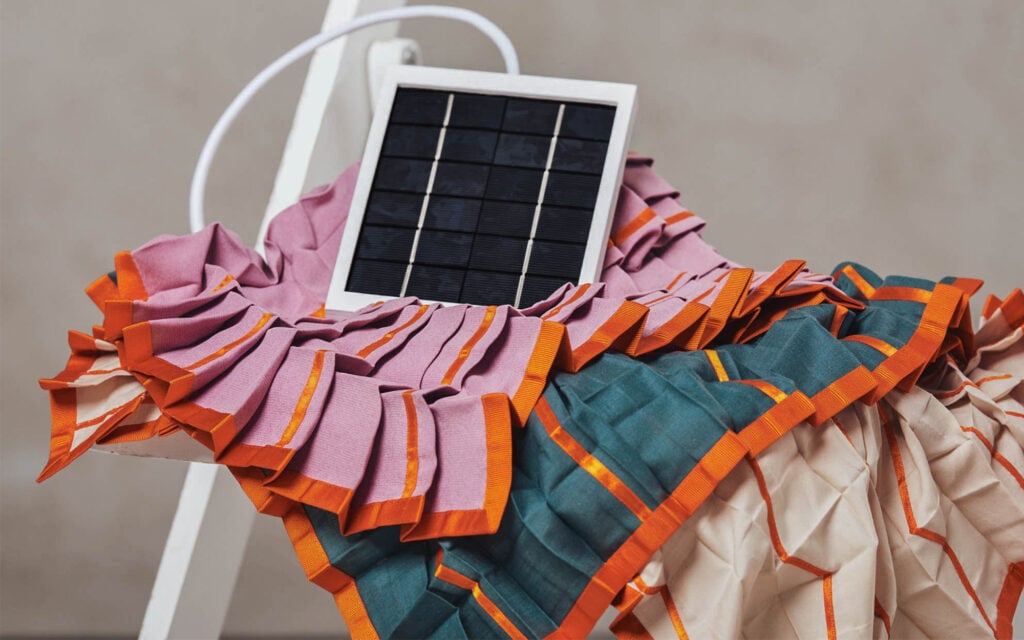
April 25, 2023
Five Students Test Their Ideas in Three Dimensions
Student design portfolios contain, unsurprisingly, mostly speculative work. This year’s Future100 winners are no exception, but a few students had the opportunity to actually build things, using CNC-milled lumber, recycled felt, 3D-printed plastic, and other materials to bring their ideas to life. Their creations, from outdoor structures to small products, demonstrate not only a fluency in transcribing designs into physical reality but a willingness to learn from their materials and take inspiration from the act of building. They are a reminder that even in an age of sumptuous digital renderings and virtual reality metaverses, you don’t know quite how something will work until you build it.

TULANE SUKKAH
Ethan Lewis, an undergraduate architecture student at Tulane University, has worked with a group of student volunteers each year over his five-year college career to design and build a sukkah on the Tulane campus. These temporary shelters are constructed in celebration of the Jewish harvest festival Sukkoth. His most recent uses CNC-milled plywood panels to integrate seating and shelter into the structural form.

EBB (& FLOW)
This outdoor lounge structure built by Martin Hitch, a graduate architecture student at California College of the Arts, began without drawings, renderings, or plans of any kind. Rather, Hitch and his teammates sketched forms inspired by the site’s desert landscape directly onto sheets of plywood and cut them by hand, resulting in a playful, expressive form.

ZONE
Zone, a space divider designed by Soojung Yoo, a recent graduate of ArtCenter College of Design, is made of dimpled discs of recycled PET felt. The screen, which snaps together with leather straps and rivets, creates a sense of privacy and acoustic comfort.

FIREFLY PENDANT
To produce Firefly, Emily Creek, an undergraduate interior design student at the University of Arkansas, combined old-school woodworking techniques (turning walnut on a lathe) and high-tech manufacturing (3D-printing the lamp’s plastic shade).

CONSUMED
Consumed is a wooden table with integrated seating and planters for growing produce from seed to consumption. Ryan Lew, an undergraduate architecture student at California Polytechnic State University, San Luis Obispo, devised the project to consider how the dining table can encourage a sustainable lifestyle.
Would you like to comment on this article? Send your thoughts to: [email protected]
Related
Profiles
Future100: Lené Fourie Creates Adaptable Interiors
The University of Houston undergraduate student is inspired by modular design that empowers users to shape their own environments.
Products
Four Creatives Harnessing the Energy of the Sun
Designers Shani Nahum, Pauline van Dongen, Yvonne Mak, and Mireille Steinhage are imagining a future where solar textiles are the norm.
Profiles
RISD Students’ Innovations Are Leading the Fight Against Climate Change
In designs for projects like the Material Research Center in Santa Monica, California, Qing Yin uses convincing first-person drawings to articulate architectural concepts.





